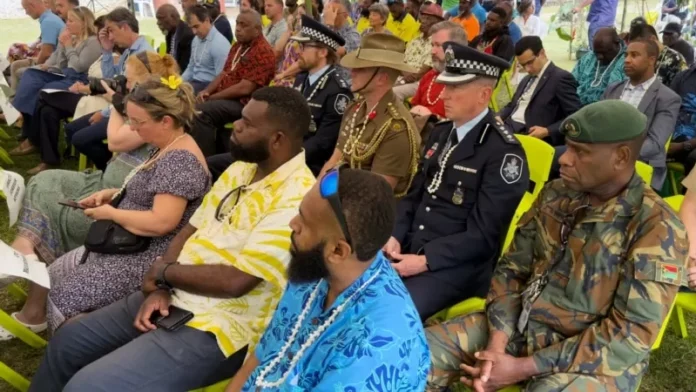Vanuatu Ancestral Relics, Trafficked as Art to New York, Return Home
The small island nation of Vanuatu, located in the South Pacific, is known for its stunning natural beauty and rich cultural heritage. However, in recent years, the country has also gained attention for a darker reason – the trafficking of its ancestral relics as art to New York. These priceless artifacts, which hold deep cultural and spiritual significance for the people of Vanuatu, were taken from their rightful home and sold for profit. But now, after years of tireless efforts by the Vanuatu government and its people, these relics are finally making their way back home.
The journey of these ancestral relics began many years ago, when they were first taken from Vanuatu and sold to art collectors in New York. These artifacts, which include intricately carved wooden sculptures, masks, and other ceremonial objects, were considered valuable commodities in the art world. However, what the buyers failed to realize was the true value of these relics to the people of Vanuatu. These objects were not just pieces of art, but sacred items that held deep spiritual and cultural significance for the indigenous communities of Vanuatu.
For the people of Vanuatu, these ancestral relics are a connection to their past, their ancestors, and their way of life. They are an integral part of their cultural identity and are used in important ceremonies and rituals. The removal of these artifacts from their homeland was not only a loss of cultural heritage, but also a violation of the rights of the Vanuatu people.
Realizing the gravity of the situation, the Vanuatu government took action to bring back these stolen relics. They worked closely with international organizations, such as UNESCO, to raise awareness about the issue and to advocate for the return of these artifacts. The government also implemented stricter laws and regulations to prevent the trafficking of cultural property in the future.
Their efforts paid off when, in 2017, the Metropolitan Museum of Art in New York voluntarily returned 13 ancestral relics to Vanuatu. This was a significant moment for the people of Vanuatu, as it marked the first time that these sacred objects were returned to their rightful home. The handover ceremony was a joyous occasion, with traditional dances and ceremonies performed to welcome back the relics.
Since then, more and more ancestral relics have been returned to Vanuatu. In 2018, the National Gallery of Australia returned 14 artifacts, and in 2019, the Museum of Archaeology and Anthropology at the University of Cambridge returned 15 artifacts. These returns were made possible through the collaborative efforts of the Vanuatu government, international organizations, and the goodwill of the institutions holding the artifacts.
The return of these ancestral relics has had a profound impact on the people of Vanuatu. It has not only brought back a piece of their cultural heritage, but also a sense of pride and identity. The relics are now being displayed in museums and cultural centers in Vanuatu, where they can be appreciated and revered by the local communities.
The return of these artifacts also serves as a reminder of the importance of preserving and protecting cultural heritage. It is a call to action for countries to work together to prevent the illegal trafficking of cultural property and to ensure that these priceless artifacts remain in their rightful homes.
The people of Vanuatu are grateful for the return of their ancestral relics and see it as a step towards healing and reconciliation. It is a testament to the resilience and determination of the Vanuatu people to reclaim their cultural heritage and to preserve it for future generations.
In conclusion, the return of Vanuatu’s ancestral relics from New York is a cause for celebration and a symbol of hope. It is a reminder that cultural heritage is not just a commodity to be bought and sold, but a precious and irreplaceable part of a community’s identity. The people of Vanuatu can now look to the future with renewed pride and a stronger connection to their past. Let this be a lesson to the world that cultural heritage must be respected and protected, and that it belongs to the people who call it home.

